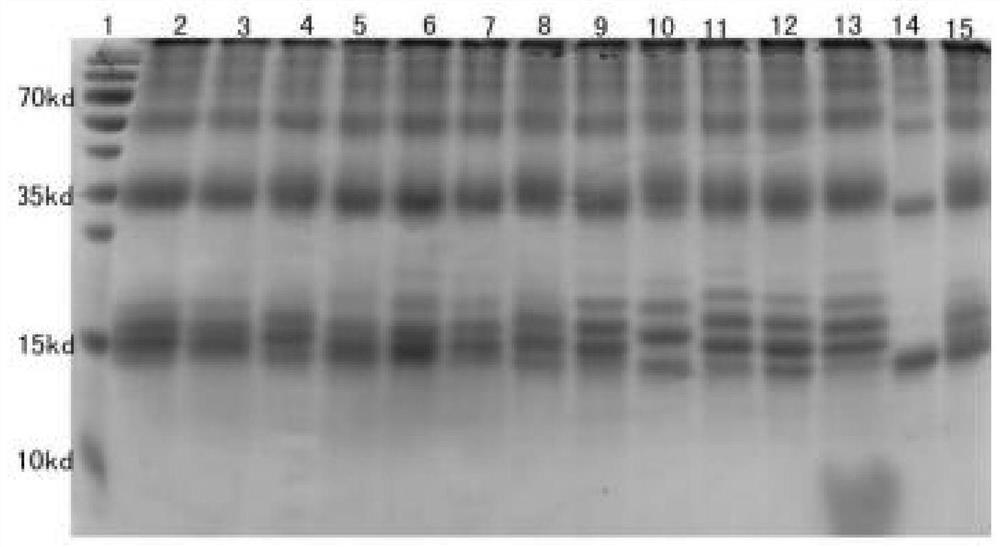Monoclonal Antibody b and Application of Shrimp Hepatopancreatic Pathogenic Toxin Pira
A monoclonal antibody and toxin protein technology, applied in the direction of immunoglobulin, anti-bacterial immunoglobulin, microbial-based methods, etc., can solve complex, high cost, and no reports on the development of monoclonal antibodies to shrimp AHPND toxin protein, etc. problem, to achieve the effect of novel design
- Summary
- Abstract
- Description
- Claims
- Application Information
AI Technical Summary
Problems solved by technology
Method used
Image
Examples
Embodiment Construction
[0021] The implementation of the present invention will be described in further detail below in conjunction with the accompanying drawings. The following embodiments are only descriptive, not restrictive, and cannot limit the protection scope of the present invention.
[0022] A monoclonal antibody B to the pathogenic toxin protein PirA of the prawn hepatopancreas, and its strain preservation number is CCTCC-C2017153.
[0023] The preparation method of the monoclonal antibody B of the above-mentioned shrimp hepatopancreas pathogenic toxin protein PirA comprises the following steps:
[0024] (1) Polypeptide synthesis and protein coupling
[0025] 根据靶标蛋白PirA蛋白的基因序列SQ13: ATGAGTAACAATATAAAACATGAAACTGACTATTCTCACGATTGGACTGTCG AACCAAACGGAGGCGTCACAGAAGTAGACAGCAAACATACACCTATCATC CCGGAAGTCGGTCGTAGTGTAGACATTGAGAATACGGGACGTGGGGAGCT TACCATTCAATACCAATGGGGTGCGCCATTTATGGCTGGCGGCTGGAAAGT GGCTAAATCACATGTGGTACAACGTGATGAAACTTACCATTTACAACGCCC TGATAATGCATTCTATCATCAGCGTATTGTTGTAATTAACAATGGCGCTAGTCGT...
PUM
 Login to View More
Login to View More Abstract
Description
Claims
Application Information
 Login to View More
Login to View More - R&D
- Intellectual Property
- Life Sciences
- Materials
- Tech Scout
- Unparalleled Data Quality
- Higher Quality Content
- 60% Fewer Hallucinations
Browse by: Latest US Patents, China's latest patents, Technical Efficacy Thesaurus, Application Domain, Technology Topic, Popular Technical Reports.
© 2025 PatSnap. All rights reserved.Legal|Privacy policy|Modern Slavery Act Transparency Statement|Sitemap|About US| Contact US: help@patsnap.com



